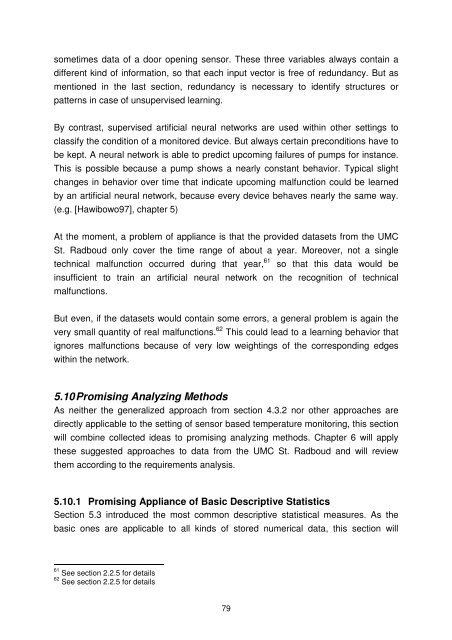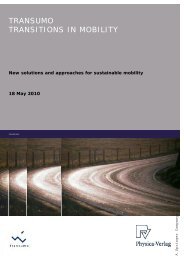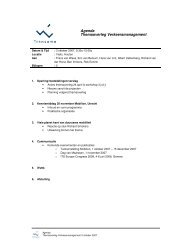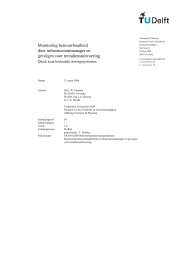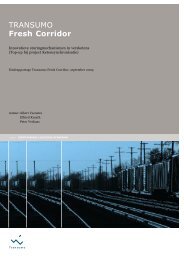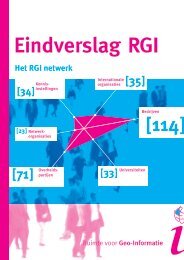Casestudie Breakdown prediction Contell PILOT - Transumo
Casestudie Breakdown prediction Contell PILOT - Transumo
Casestudie Breakdown prediction Contell PILOT - Transumo
You also want an ePaper? Increase the reach of your titles
YUMPU automatically turns print PDFs into web optimized ePapers that Google loves.
sometimes data of a door opening sensor. These three variables always contain a<br />
different kind of information, so that each input vector is free of redundancy. But as<br />
mentioned in the last section, redundancy is necessary to identify structures or<br />
patterns in case of unsupervised learning.<br />
By contrast, supervised artificial neural networks are used within other settings to<br />
classify the condition of a monitored device. But always certain preconditions have to<br />
be kept. A neural network is able to predict upcoming failures of pumps for instance.<br />
This is possible because a pump shows a nearly constant behavior. Typical slight<br />
changes in behavior over time that indicate upcoming malfunction could be learned<br />
by an artificial neural network, because every device behaves nearly the same way.<br />
(e.g. [Hawibowo97], chapter 5)<br />
At the moment, a problem of appliance is that the provided datasets from the UMC<br />
St. Radboud only cover the time range of about a year. Moreover, not a single<br />
technical malfunction occurred during that year, 61 so that this data would be<br />
insufficient to train an artificial neural network on the recognition of technical<br />
malfunctions.<br />
But even, if the datasets would contain some errors, a general problem is again the<br />
very small quantity of real malfunctions. 62 This could lead to a learning behavior that<br />
ignores malfunctions because of very low weightings of the corresponding edges<br />
within the network.<br />
5.10 Promising Analyzing Methods<br />
As neither the generalized approach from section 4.3.2 nor other approaches are<br />
directly applicable to the setting of sensor based temperature monitoring, this section<br />
will combine collected ideas to promising analyzing methods. Chapter 6 will apply<br />
these suggested approaches to data from the UMC St. Radboud and will review<br />
them according to the requirements analysis.<br />
5.10.1 Promising Appliance of Basic Descriptive Statistics<br />
Section 5.3 introduced the most common descriptive statistical measures. As the<br />
basic ones are applicable to all kinds of stored numerical data, this section will<br />
61 See section 2.2.5 for details<br />
62 See section 2.2.5 for details<br />
79


